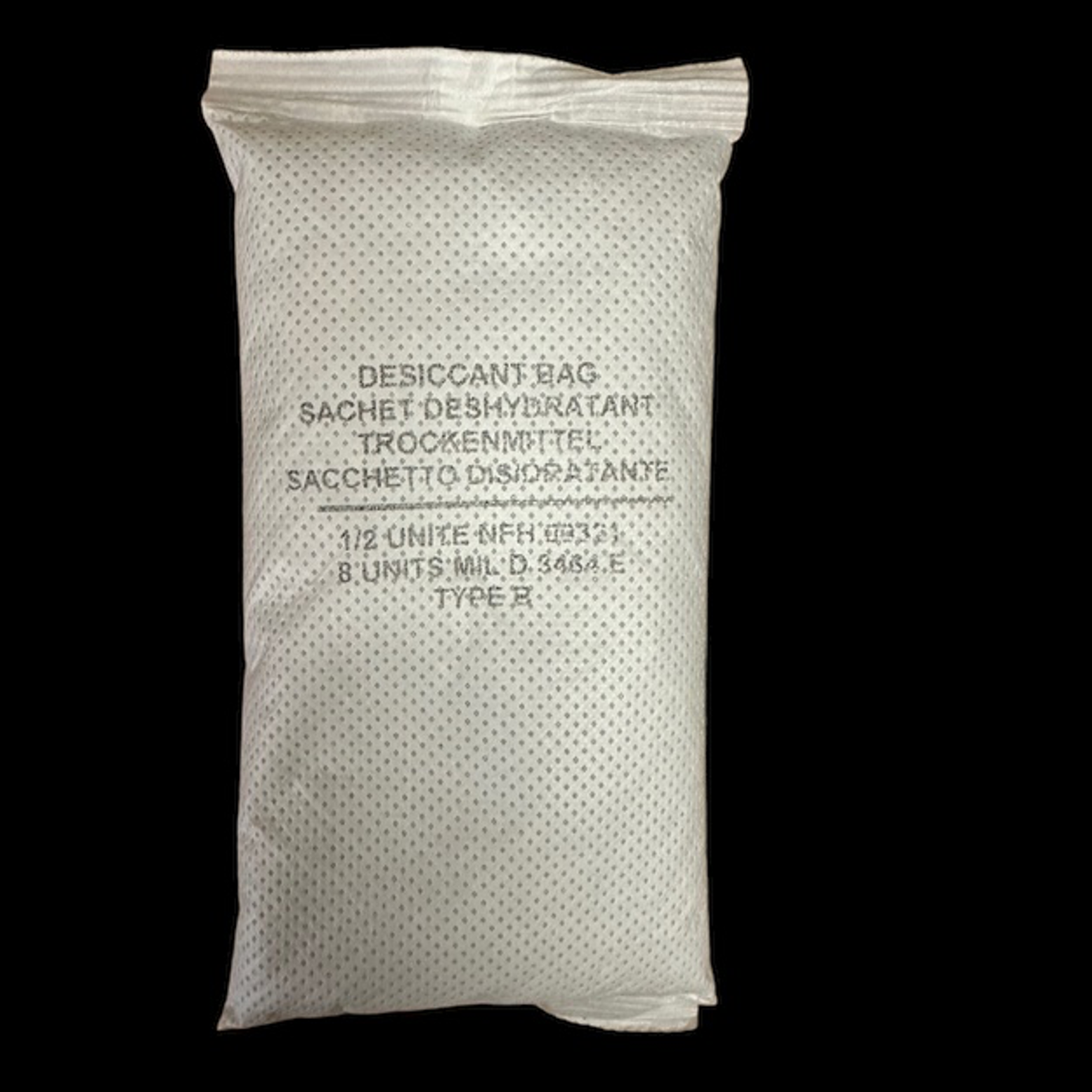
DIN 55743 Desiccant bag - 8 TME
Desiccant bags are used to reduce the relative moisture content in packaging. Their use reduces the moisture in the packaging and thus protects the materials from damage that can occur due to high humidity during storage and transportation. Clay is a natural material and it´s use for moisture control is regulated by the DIN 55473 and MILD3464 standards.
The required number of bags is determined in accordance with the industry standard DIN 55473 and MIL D 3464E.
Desiccant bag according to MIL D 3464E, also complies with DIN 55473
- Dustproof packaging material
- Desiccant bags should only be used inside packaging
- In larger packaging, the desiccant bags should be evenly distributed
- The desiccant bags should only be removed from the original packaging immediately before use
- Store the desiccant bags in a dry and cool environment
- Desiccant material is clay
- Available in bag sizes: 4 TME, 8 TME (according to DIN 55473)
- Other bag sizes available on request
Special conditions possible for larger order quantities. Please contact us.
All prices are net, excluding VAT.
Tax excluded. Shipping calculated at checkout

In what applications are desiccant bags used?
Desiccant bags are special bags designed to absorb moisture in various environments. They are commonly used in packaging, containers and other products to prevent moisture damage. Here is a summary of desiccant bag applications:
- Food packaging: Desiccant bags are widely used in the food industry to reduce moisture in packaged foods. Moisture can lead to spoilage, mold growth and loss of flavor and quality. By using desiccant bags, moisture remains at a low level, which extends the shelf life of the food.
- Electronics and electronics packaging: Electronic devices are sensitive to moisture and can be damaged by condensation, rusting and corrosion. Desiccant bags are used in the electronics industry to reduce humidity in packages of electronic components and devices, improving their service life and reliability.
- Medical and pharmaceutical products: In the medical and pharmaceutical industries, it is critical that products such as medications, diagnostic equipment and medical instruments are kept dry. Desiccant bags are used to absorb moisture and reduce the risk of mold growth, spoilage and loss of efficacy.
- Transportation and shipping: When transporting goods over long distances or in humid environments, there is a risk of moisture damage. Desiccant bags are placed in shipping containers and packaging to absorb moisture and protect products during shipment.
- Archiving documents and books: Historical documents, books, and archives are susceptible to moisture damage that can affect the structure and readability of the materials. Desiccant bags are used in archive rooms and libraries to maintain controlled humidity levels to help preserve materials over the long term.
Overall, desiccant bags provide an effective solution for absorbing moisture to prevent damage to various products. Their applications range from the food and electronics industries to archiving and storage of items